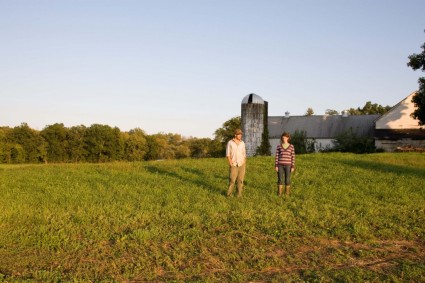loanerous terms
Lindsey Lusher breaks down loan obstacles to young and beginning farmers.

Young farmers need help from the USDA—and the next Farm Bill
by Lindsey Lusher Shute
15 Dec 2010 in Grist
More and more Millennials are rejecting Cubicleville and instead opting for hands-on professions, including farming -- and not a minute too soon.
Over the last hundred years, the number of young people in agriculture has steadily declined, from 1.8 million principal farm operators in 1910 to just 118,000 today, according to the USDA's Agricultural Census. As of 2007, for each farmer under 35, there were six over sixty-five. Since 2002 there's been a slight uptick in the number of farmers (not just the principals) between the ages of 25 and 34, but the overall number of farmers under 35 increased by only 2,000.
Unless an agricultural revival and major policy change begins now, the numbers of farmers will certainly shrink: the Wisconsin Department of Agriculture estimates that 500,000 farmers will retire in the next 20 years.
And that's why U.S. Secretary of Agriculture Tom Vilsack recently called for 100,000 new farmers, and some of the few uncontroversial elements of the last Farm Bill were the handful of programs and provisions for new and beginning farmers. The government offers Beginning Farmer and Rancher Development Program grants (which provide funds for universities and nonprofits to train farmers) as well as direct loans to farmers to operate their farms or buy land.
The problem is, many young farmers say that they don't know about these programs, are disqualified because of existing rules, or receive misinformation at the local level that prevents them from participating.
At the recent Young Farmers Conference at the Stone Barns Center for Food and Agriculture in New York, the speakers at a special policy workshop organized by the National Young Farmers' Coalition, which I lead, shared their experiences with Farm Bill programs and ideas for change.
continue reading HERE

